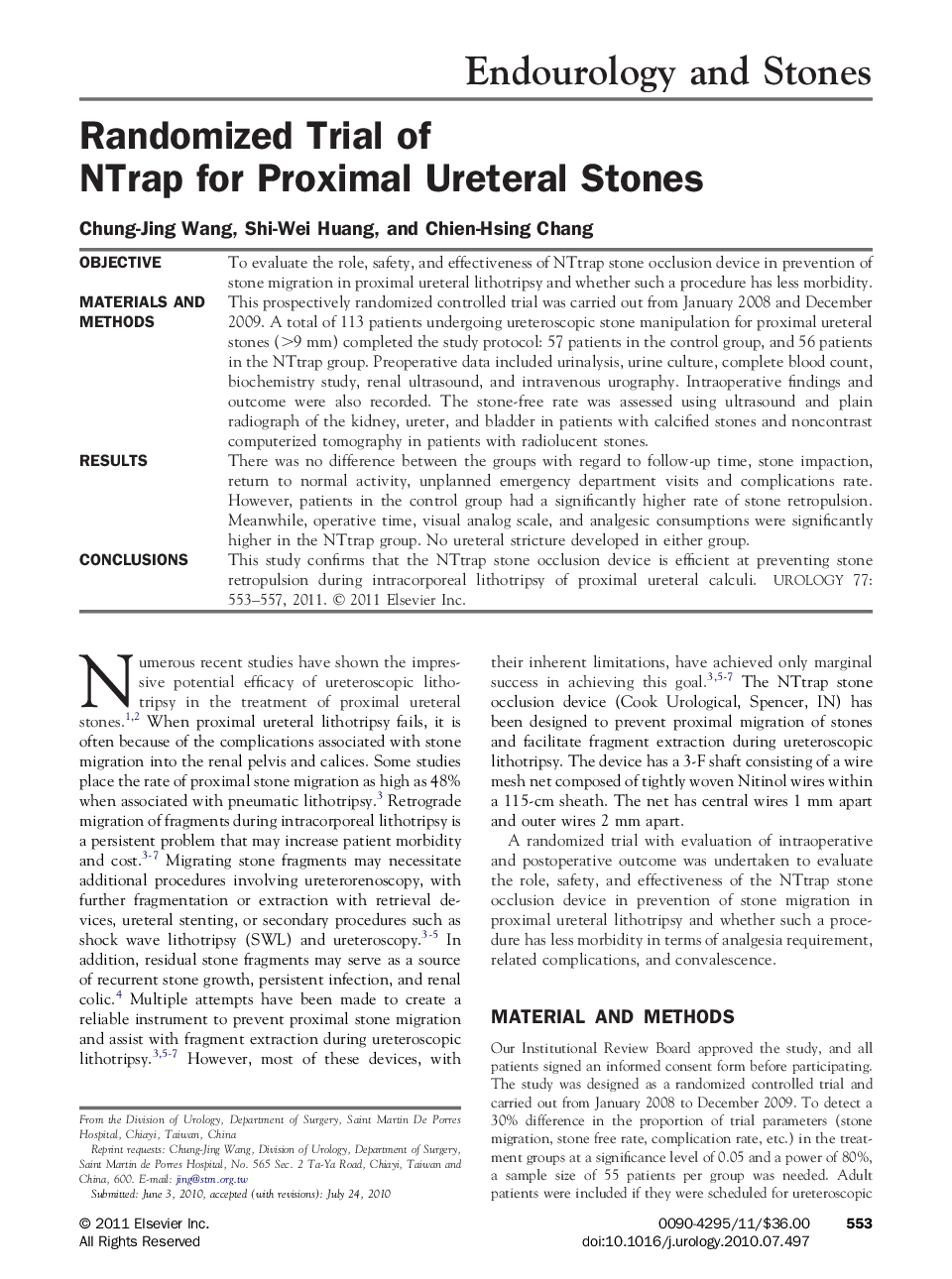| Article ID | Journal | Published Year | Pages | File Type |
|---|---|---|---|---|
| 3901224 | Urology | 2011 | 5 Pages |
ObjectiveTo evaluate the role, safety, and effectiveness of NTtrap stone occlusion device in prevention of stone migration in proximal ureteral lithotripsy and whether such a procedure has less morbidity.Materials and MethodsThis prospectively randomized controlled trial was carried out from January 2008 and December 2009. A total of 113 patients undergoing ureteroscopic stone manipulation for proximal ureteral stones (>9 mm) completed the study protocol: 57 patients in the control group, and 56 patients in the NTtrap group. Preoperative data included urinalysis, urine culture, complete blood count, biochemistry study, renal ultrasound, and intravenous urography. Intraoperative findings and outcome were also recorded. The stone-free rate was assessed using ultrasound and plain radiograph of the kidney, ureter, and bladder in patients with calcified stones and noncontrast computerized tomography in patients with radiolucent stones.ResultsThere was no difference between the groups with regard to follow-up time, stone impaction, return to normal activity, unplanned emergency department visits and complications rate. However, patients in the control group had a significantly higher rate of stone retropulsion. Meanwhile, operative time, visual analog scale, and analgesic consumptions were significantly higher in the NTtrap group. No ureteral stricture developed in either group.ConclusionsThis study confirms that the NTtrap stone occlusion device is efficient at preventing stone retropulsion during intracorporeal lithotripsy of proximal ureteral calculi.
